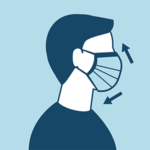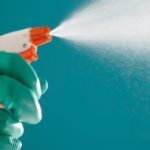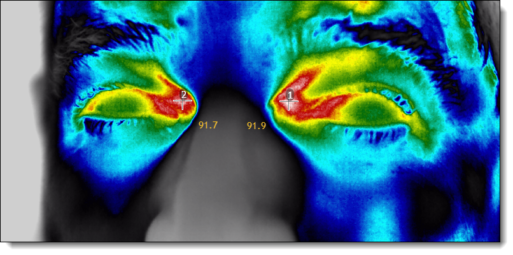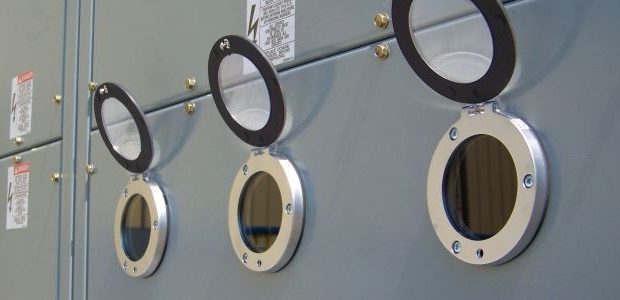Colbert Infrared Services, Inc is an Essential Business
We are stronger together!
Colbert Infrared Services, Inc provides Infrared Thermography of electrical distribution systems for City, County, and Federal Electrical Utilities, Essential Manufacturing Facilities, Airports, Shipping Ports, Maritime, and Hospitals nationwide. Additionally, we provide personnel thermal screening for Covid-19 infections on essential job sites and for the US Military and Government Facilities.
We know many of our customers provide essential goods and services and are facing unique challenges right now.
Our goal is to help continue to manage your facilities and workloads by being a solid essential resource for you during this time. While it may be uncharted territory, our innovation and solutions are here for you.
You are not alone!
COVID-19 PLAN!
The health and welfare of our employees, clients, partners, families, and communities are of utmost
importance to our company Colbert Infrared Services, Inc. Colbert has implemented protocols and a COVID-19 Plan to continue to operate and provide the essential work needed by following the procedures set by the Washington State DOSH DIRECTIVE 1.70 General Coronavirus Prevention Under Stay Home – Stay Healthy Order (Updated: May 15, 2020), the Department of Labor and Industries Division of Occupational Safety and Health, The Centers for Disease Control and Prevention Guidelines – CDC Coronavirus Disease 2019 (COVID-19), and The Occupational Safety and Health Administration (OSHA) Guidance and Hazard Recognition.
The safety protocols have been established to classify and assess the risk posed and the mitigation factors needed to prevent exposure and transmission of COVID-19. All employees will adhere to the safety protocols and the plan established by management to the extent reasonable and possible while accounting for varying circumstances depending on the job sites. These procedures are subject to change with or without notice to adhere to the most up to date guidance provided by state and federal institutions mentioned above. Colbert has created a task force designed to monitor all guidelines daily for any changes or updates.
At the moment, our employees are considered Lower Exposure Risk (Caution) following the OSHA Hazard Recognition pyramid.
Lower Exposure Risk (Caution)
Jobs that do not require contact with people known to be, or suspected of being, infected with SARS-CoV-2. Workers in this category have minimal occupational contact with the public and other coworkers.
Examples include:
• Remote workers (i.e., those working from home during the pandemic).
• Office workers who do not have frequent close contact with coworkers, customers, or the public.
• Manufacturing and industrial facility workers who do not have frequent close contact with coworkers, customers, or the public.
• Healthcare workers providing only telemedicine services.
• Long-distance truck drivers.
At Colbert, we believe in exercising overabundance of caution and have decided to have our employees follow the Interim Guidance for Employers with Workers at High Risk, even though our Exposure Risk is much lower. These higher standards should help us lessen any possible exposure and transmission of COVID-19 to our employers, partners, and clients.
CDC Activities and Initiatives Supporting the COVID-19
As workplaces consider a gradual scale-up of activities towards pre-COVID-19 operating practices, it is particularly important to keep in mind that some workers are at higher risk for severe illness from COVID-19. These workers include individuals over age 65 and those with underlying medical conditions. Such underlying conditions include, but are not limited to, chronic lung disease, moderate to severe asthma, hypertension, severe heart conditions, weakened immunity, severe obesity, diabetes, liver disease, and chronic kidney disease that requires dialysis.
Workers at higher risk for severe illness should be encouraged to self-identify, and employers should avoid making unnecessary medical inquiries. Employers should take particular care to reduce workers’ risk of exposure to COVID-19 while making sure to be compliant with relevant Americans with Disabilities Act (ADA) and Age Discrimination in Employment Act (ADEA) regulations. First and foremost, this means following the CDC and the Occupational Safety and Health Administration (OSHA) guidance for reducing workplace exposure for all employees. All decisions about following these recommendations should be made in collaboration with local health officials and other State and local authorities who can help assess the current level of mitigation needed based on levels of COVID-19 community transmission and the capacities of the local public health and healthcare systems.
In addition, the guidance offered below applies to workplaces generally; specific industries may require more stringent safety precautions.
Finally, there may be essential workplaces in which the recommended mitigation strategies are not feasible. CDC is releasing this interim guidance, laid out in a series of three steps, to inform a gradual scale-up of operations. The scope and nature of community mitigation suggested decreases from Step 1 to Step 3.
Some amount of community mitigation is necessary across all steps until a vaccine or therapeutic drug becomes widely available.
Scaling Up Operations
In all Steps:
• Establish and maintain communication with local and state authorities to determine current mitigation levels in your community.
• Protect employees at higher risk for severe illness by supporting and encouraging options to telework.
• Consider offering workers at higher risk duties that minimize their contact with customers and other employees (e.g., restocking shelves rather than working as a cashier), if agreed to by the worker.
• Encourage any other entities to share the same workspace also follow this guidance.
• Provide employees from higher transmission areas (earlier Step areas) telework and other options as feasible to eliminate travel to workplaces in lower transmission (later Step) areas and vice versa.
Step 1: Scale-up only if the business can ensure strict social distancing, proper cleaning and disinfecting requirements, and protection of their workers and customers; workers at higher risk for severe illness are recommended to shelter in place.
Step 2: Scale-up only if the business can ensure moderate social distancing, proper cleaning and disinfecting requirements, and protection of their workers and customers; workers at higher risk for severe illness are recommended to shelter in place.
Step 3: Scale-up only if the business can ensure limited social distancing, proper cleaning and disinfecting requirements, and protection of their workers and customers.
Safety Action
Promote healthy hygiene practices (Steps 1-3)

• Enforce hand washing, covering coughs and sneezes, and using cloth face coverings when around others where feasible;
however, certain industries may require face shields.
• Ensure that adequate supplies to support healthy hygiene behaviors, including soap, hand sanitizer with at least 60 percent alcohol, tissues, paper towels, and no-touch trash cans.
• Post signs on how to stop the spread of COVID-19 properly wash hands, promote everyday protective measures, and properly wear a face covering.
Intensify cleaning, disinfection, and ventilation (Steps 1-3)

• Clean and disinfect frequently touched surfaces at least daily and shared objects between use.
• Avoid use or sharing of items that are not easily cleaned, sanitized, or disinfected.
• Ensure the safe and correct application of disinfectants.
• Ensure that ventilation systems operate properly and increase circulation of outdoor air as much as possible such as by opening windows and doors. Do not open windows and doors if doing so poses a safety risk to individuals and employees using the workspace.
• Take steps to ensure that all water systems and features (for example, drinking fountains, decorative fountains) are safe to use after a prolonged facility shutdown to minimize the risk of Legionnaires’ disease and other diseases associated with water.






